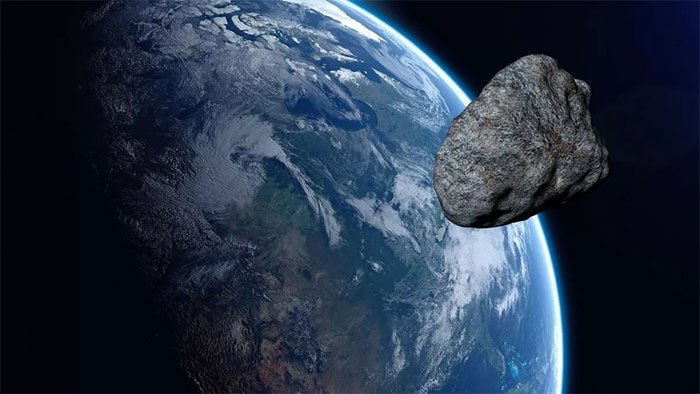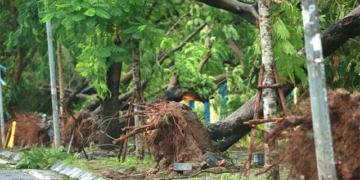On June 28, the asteroid 2013 WV44, measuring over 90 meters and traveling at a speed of 11.8 km/s, passed by Earth without causing any impact.
The NASA Near-Earth Object Research Center has been tracking this asteroid for the past 10 years. Researchers calculated that the asteroid would pass Earth at a distance of 3.3 million kilometers on June 28, at 4 AM ET or 15 PM Vietnam time. In terms of the size of the Solar System, this distance is considered very close.

Asteroids continuously pass by Earth, but researchers estimate that there will be no collisions for at least the next 1,000 years. (Image: Pixabay).
Asteroids rarely pose a serious threat to Earth, such as the asteroid that hit Earth 66 million years ago and caused mass extinction, but there is still a risk of dangerous situations in the future. This is why agencies like NASA and the European Space Agency (ESA) are investing significant time and resources in monitoring asteroids in space.
Moreover, last year NASA tested a defensive system capable of altering the trajectory of an asteroid in case it were to head toward Earth, known as DART. The experiment, which involved crashing a spacecraft into an asteroid, successfully changed the celestial object’s trajectory, and engineers are currently fine-tuning the system for even greater efficacy.
“A relatively small number of objects are large enough and close enough to Earth to require close observation,” NASA stated. However, over time, the gravitational pull of planets can alter the trajectory of a celestial body and cause its orbit to intersect with Earth, thereby maintaining the risk of future collisions.
The agency has also cataloged asteroids larger than one kilometer near Earth and has recorded nearly 1,000 such asteroids, accounting for about 95% of the total. It is estimated that in the next 1,000 years, none of these asteroids will collide with Earth. The asteroid with the highest collision risk is 1994 PC1, which is approximately one kilometer wide and has a 0.00151% chance of collision.


















































